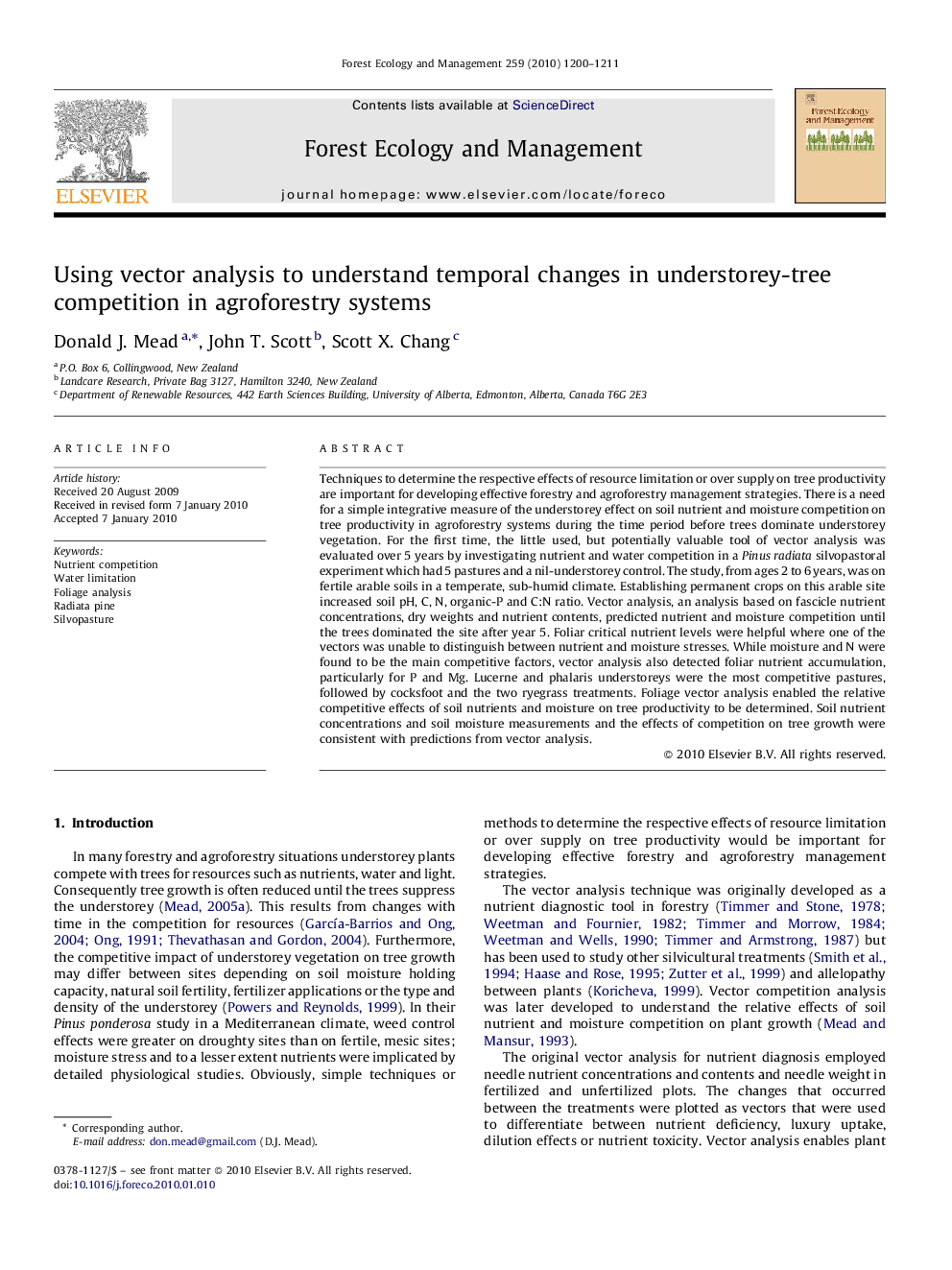| Article ID | Journal | Published Year | Pages | File Type |
|---|---|---|---|---|
| 88756 | Forest Ecology and Management | 2010 | 12 Pages |
Techniques to determine the respective effects of resource limitation or over supply on tree productivity are important for developing effective forestry and agroforestry management strategies. There is a need for a simple integrative measure of the understorey effect on soil nutrient and moisture competition on tree productivity in agroforestry systems during the time period before trees dominate understorey vegetation. For the first time, the little used, but potentially valuable tool of vector analysis was evaluated over 5 years by investigating nutrient and water competition in a Pinus radiata silvopastoral experiment which had 5 pastures and a nil-understorey control. The study, from ages 2 to 6 years, was on fertile arable soils in a temperate, sub-humid climate. Establishing permanent crops on this arable site increased soil pH, C, N, organic-P and C:N ratio. Vector analysis, an analysis based on fascicle nutrient concentrations, dry weights and nutrient contents, predicted nutrient and moisture competition until the trees dominated the site after year 5. Foliar critical nutrient levels were helpful where one of the vectors was unable to distinguish between nutrient and moisture stresses. While moisture and N were found to be the main competitive factors, vector analysis also detected foliar nutrient accumulation, particularly for P and Mg. Lucerne and phalaris understoreys were the most competitive pastures, followed by cocksfoot and the two ryegrass treatments. Foliage vector analysis enabled the relative competitive effects of soil nutrients and moisture on tree productivity to be determined. Soil nutrient concentrations and soil moisture measurements and the effects of competition on tree growth were consistent with predictions from vector analysis.
